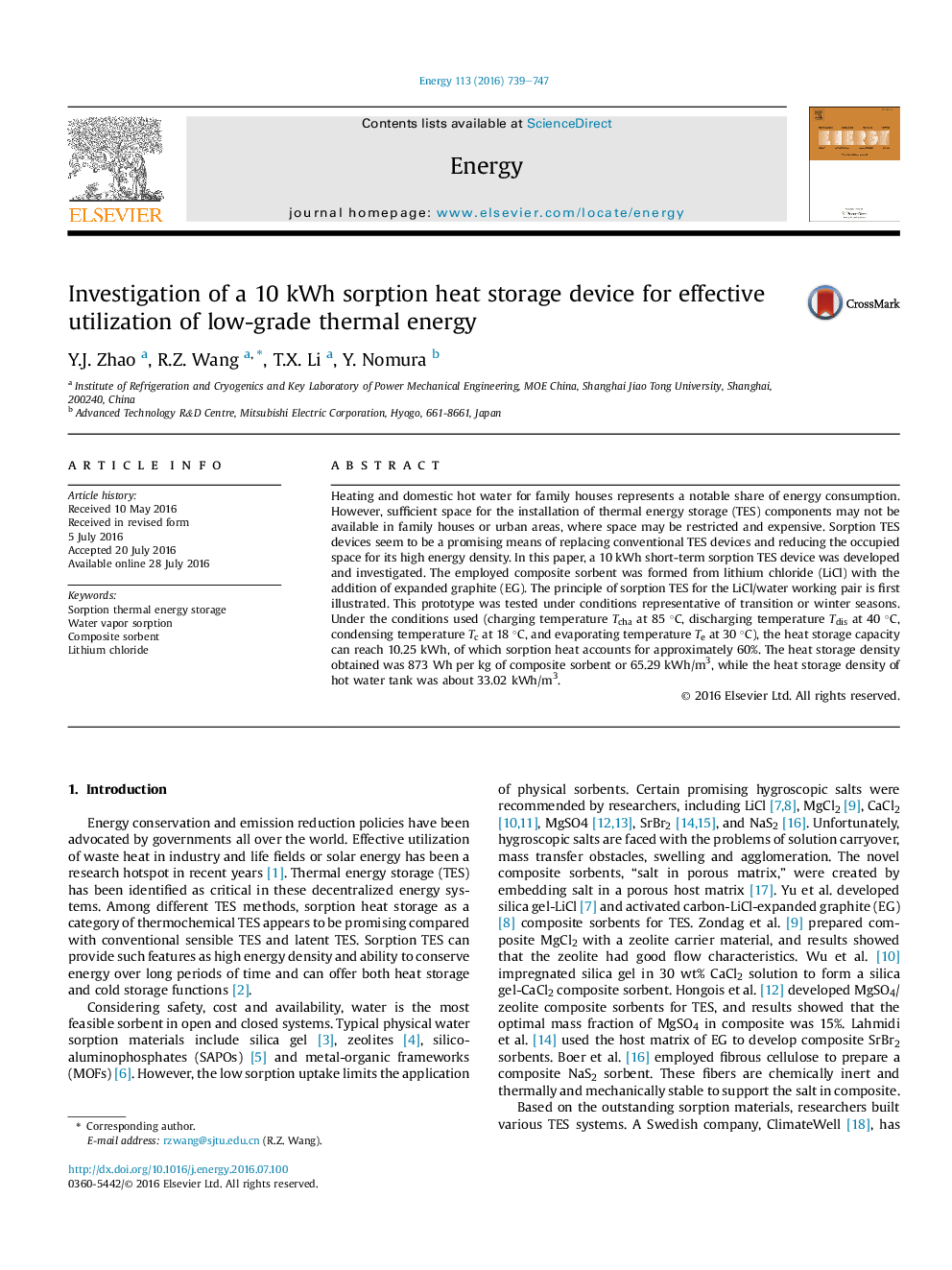| Article ID | Journal | Published Year | Pages | File Type |
|---|---|---|---|---|
| 1730778 | Energy | 2016 | 9 Pages |
Abstract
Heating and domestic hot water for family houses represents a notable share of energy consumption. However, sufficient space for the installation of thermal energy storage (TES) components may not be available in family houses or urban areas, where space may be restricted and expensive. Sorption TES devices seem to be a promising means of replacing conventional TES devices and reducing the occupied space for its high energy density. In this paper, a 10 kWh short-term sorption TES device was developed and investigated. The employed composite sorbent was formed from lithium chloride (LiCl) with the addition of expanded graphite (EG). The principle of sorption TES for the LiCl/water working pair is first illustrated. This prototype was tested under conditions representative of transition or winter seasons. Under the conditions used (charging temperature Tcha at 85 °C, discharging temperature Tdis at 40 °C, condensing temperature Tc at 18 °C, and evaporating temperature Te at 30 °C), the heat storage capacity can reach 10.25 kWh, of which sorption heat accounts for approximately 60%. The heat storage density obtained was 873 Wh per kg of composite sorbent or 65.29 kWh/m3, while the heat storage density of hot water tank was about 33.02 kWh/m3.
Related Topics
Physical Sciences and Engineering
Energy
Energy (General)
Authors
Y.J. Zhao, R.Z. Wang, T.X. Li, Y. Nomura,
